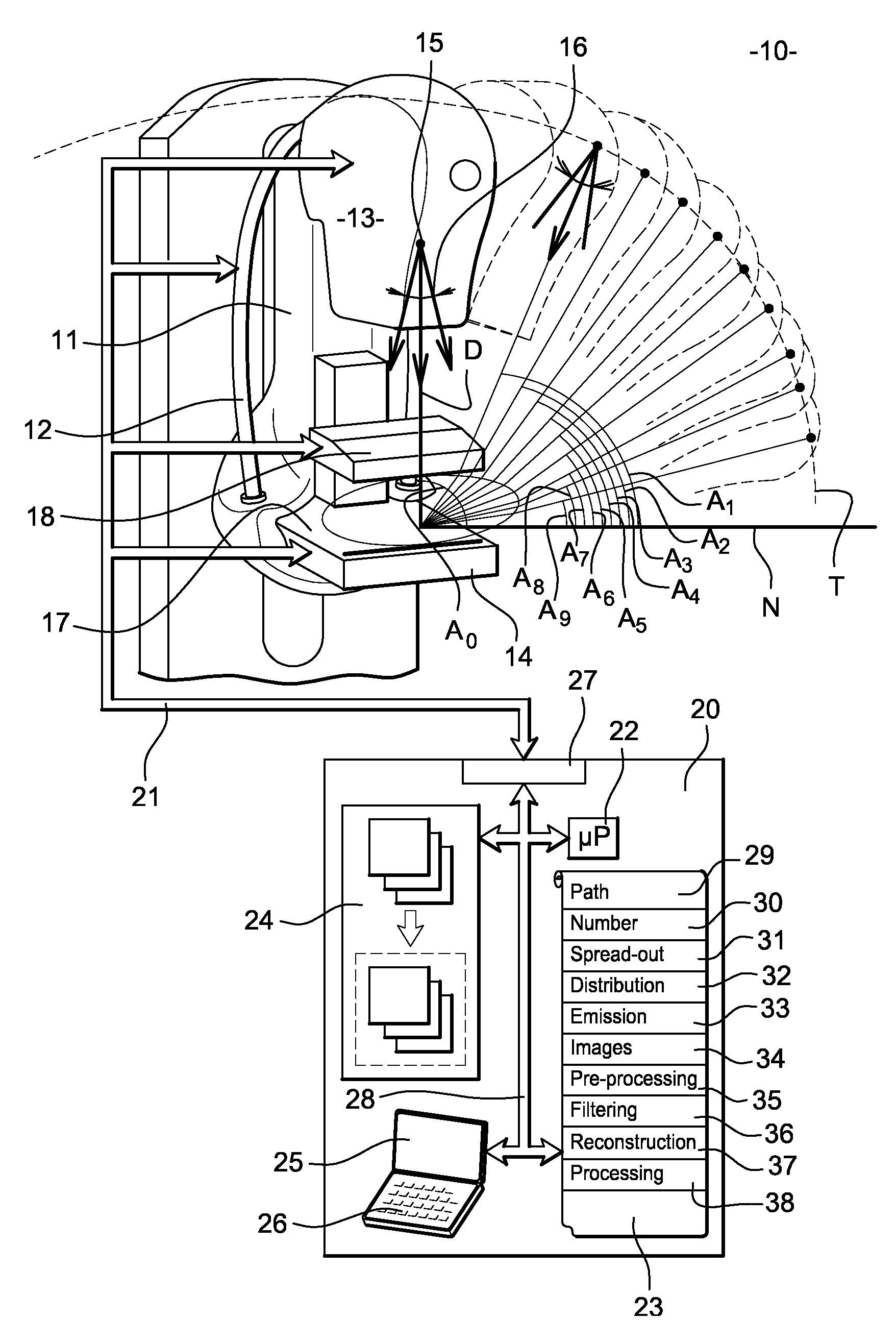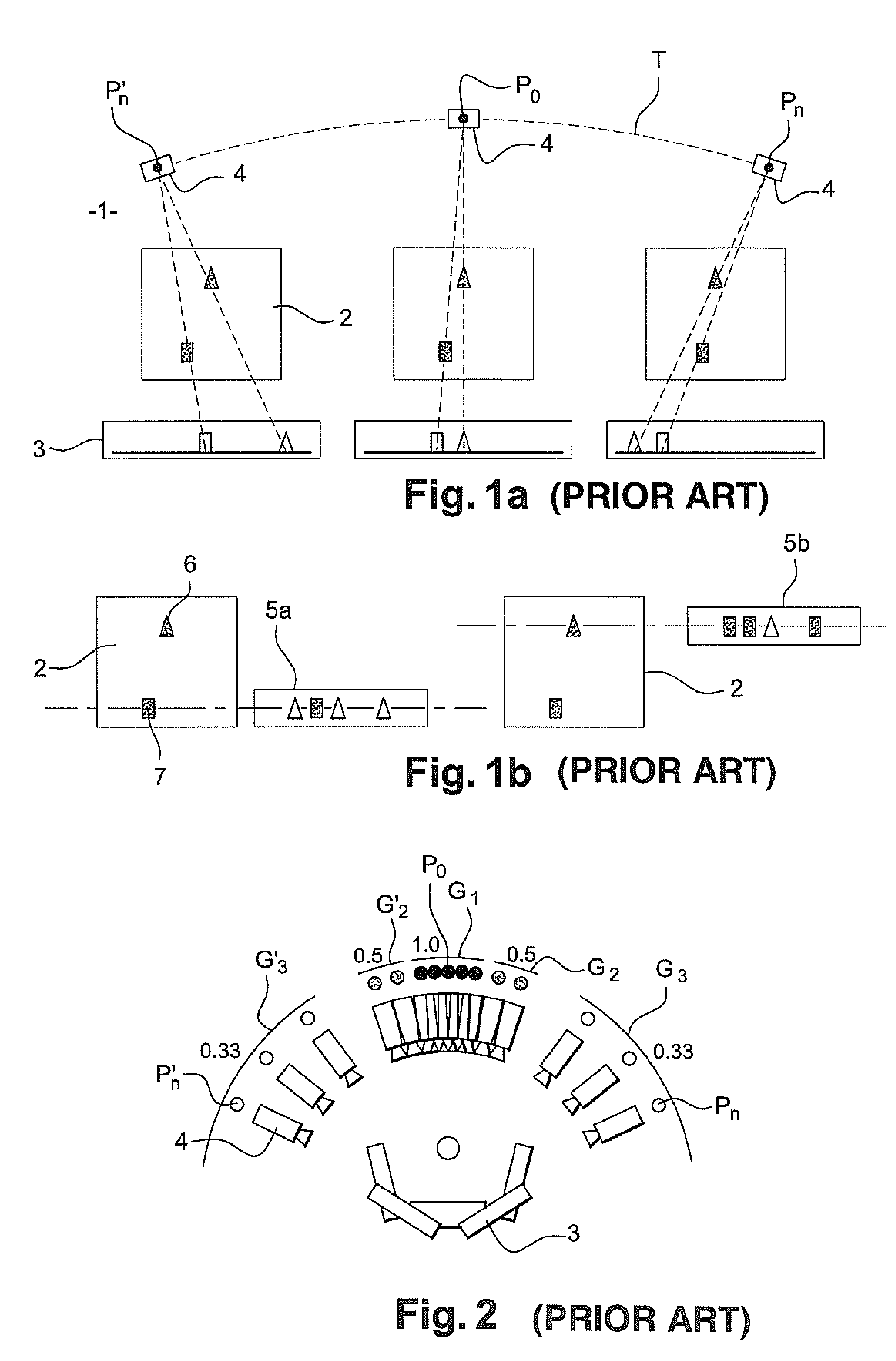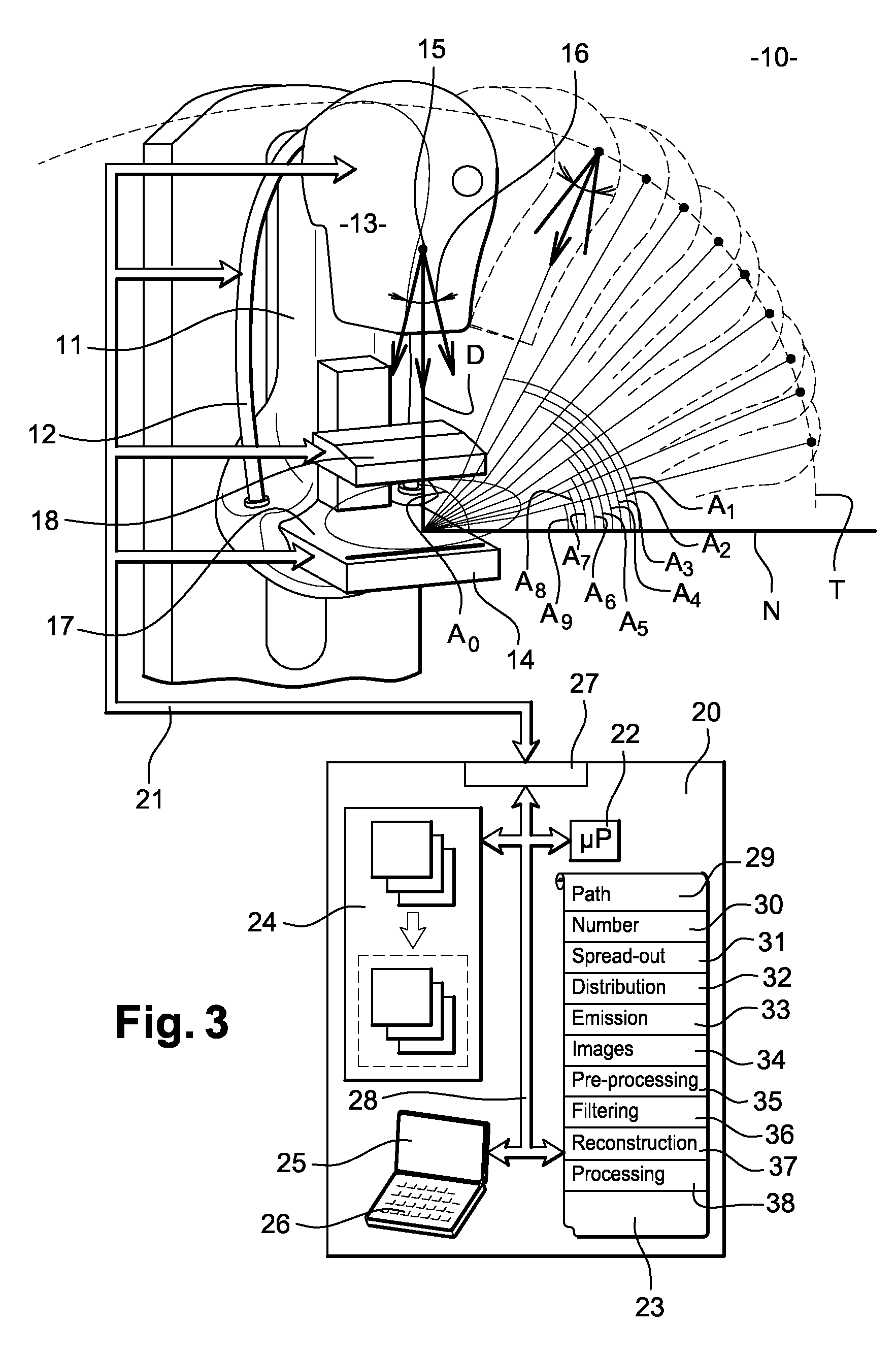Method for obtaining a tomosynthesis image
a tomosynthesis and image technology, applied in the field of tomosynthesis images, can solve the problems of inability to identify certain calcium deposits and certain cases of opacity, excessive public health costs, limitations of tomosynthesis mammography apparatus, etc., to facilitate the detection of radiological signs, facilitate identification, and improve the effect of examination efficiency
- Summary
- Abstract
- Description
- Claims
- Application Information
AI Technical Summary
Benefits of technology
Problems solved by technology
Method used
Image
Examples
Embodiment Construction
[0071]FIG. 3 shows an X-ray device, especially a mammography machine, according to the invention. This X-ray device 10 has a vertical column 11. On this vertical column 11, there is a hinged arm 12 bearing an X-ray-emitting tube 13 and a detector 14 capable of detecting the X-rays emitted by the tube 13. This arm 12 may be oriented vertically, horizontally or obliquely. The tube 13 is provided with a focus 15 which is the X-ray emitting focus. This focus 15 emits an X-ray beam 16 along a main direction of emission D.
[0072]The arm 12 is hinged on the vertical column 11 in such a way that it can be used to shift the tube 13 along a path T in the form of a circle arc while, at the same time, leaving the detector 14 immobile. Other arrangements are possible, enabling the tube 13 to move in a plane or in a sphere portion. The tube 13 can then take up different positions spread in a tilt between two extreme positions. These two positions are, for example, symmetrical to each other relativ...
PUM
 Login to View More
Login to View More Abstract
Description
Claims
Application Information
 Login to View More
Login to View More - R&D
- Intellectual Property
- Life Sciences
- Materials
- Tech Scout
- Unparalleled Data Quality
- Higher Quality Content
- 60% Fewer Hallucinations
Browse by: Latest US Patents, China's latest patents, Technical Efficacy Thesaurus, Application Domain, Technology Topic, Popular Technical Reports.
© 2025 PatSnap. All rights reserved.Legal|Privacy policy|Modern Slavery Act Transparency Statement|Sitemap|About US| Contact US: help@patsnap.com



